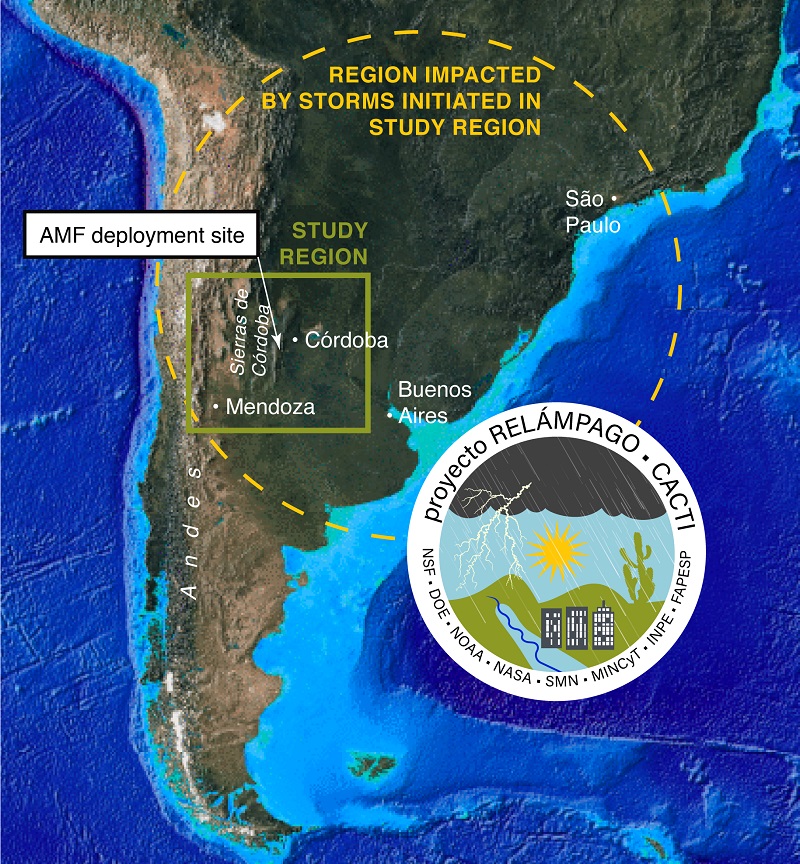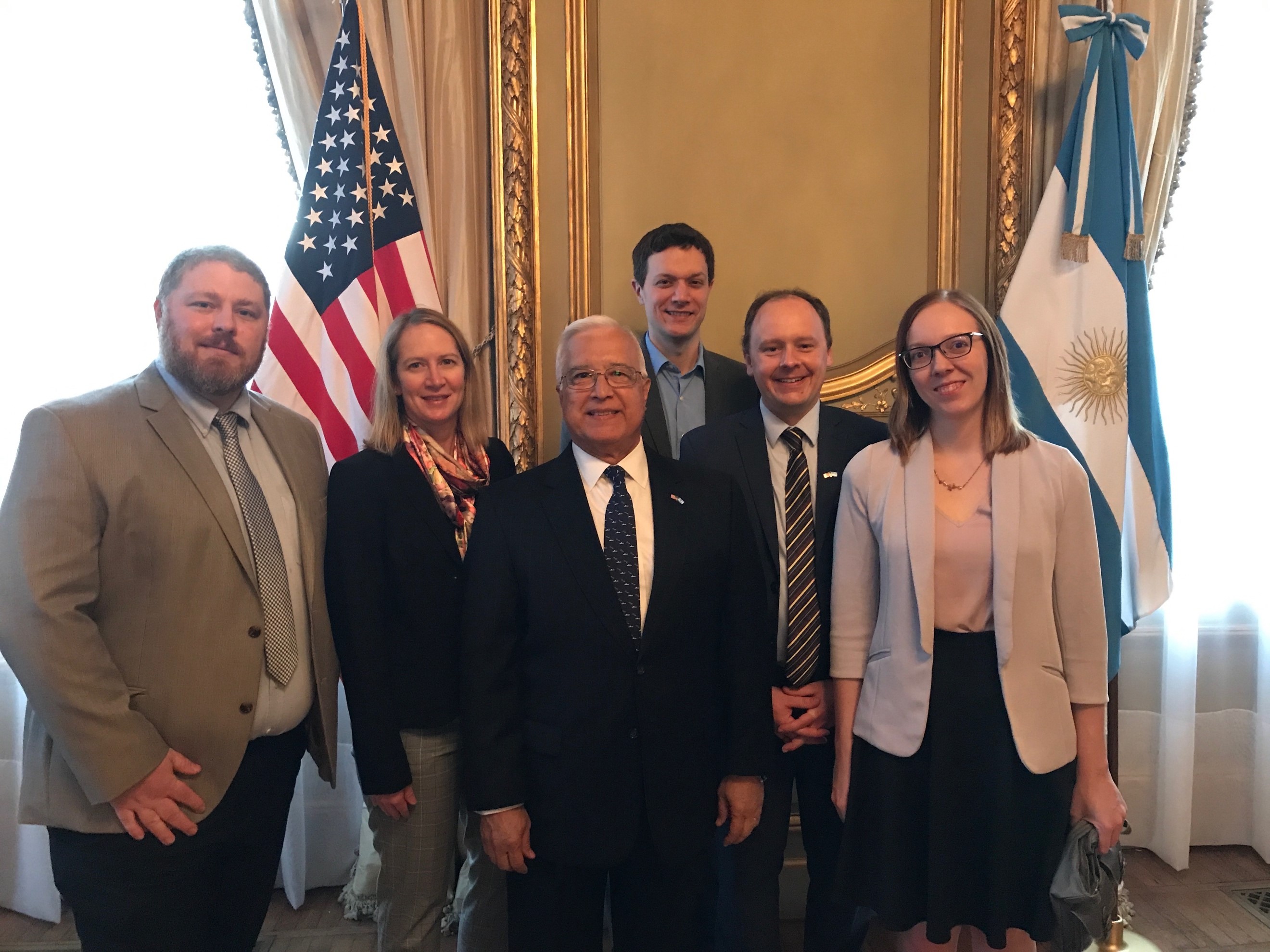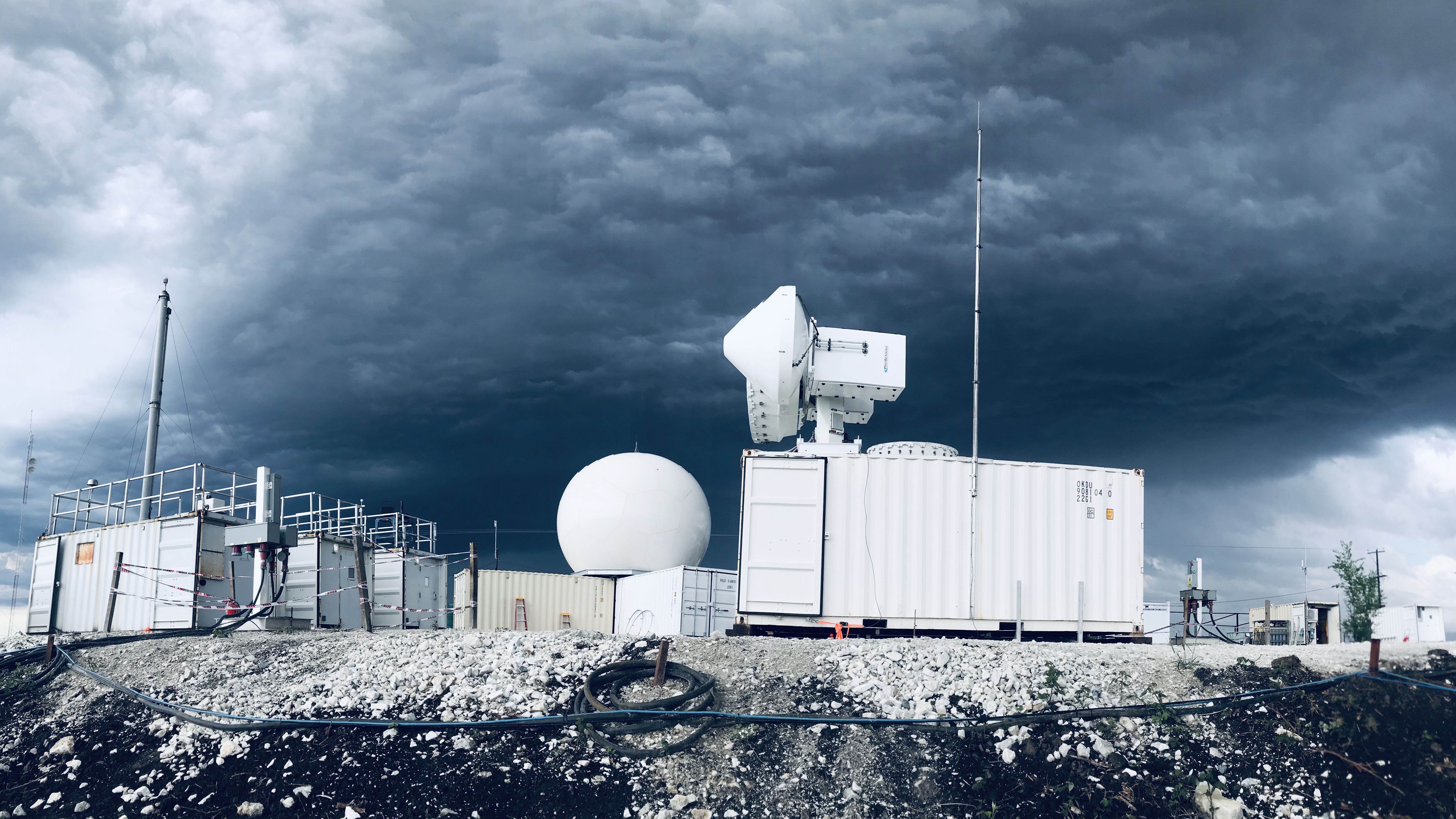RELAMPAGO-CACTI Workshop All About the Data
Published: 20 January 2020
Editor’s note: Adam Varble, principal investigator for the Cloud, Aerosol, and Complex Terrain Interactions (CACTI) field campaign, writes about a data workshop held with researchers from the Remote sensing of Electrification, Lightning, And Mesoscale/microscale Processes with Adaptive Ground Observations (RELAMPAGO) campaign.

The RELAMPAGO-CACTI Data Analysis Workshop was held in Buenos Aires, Argentina, from November 19–22, 2019, approximately one year after the RELAMPAGO-CACTI Intensive Observing Period (IOP) over and downstream of the Sierras de Córdoba mountain range in central Argentina. The purpose of the workshop was twofold. First, researchers discussed the vast array of data sets collected during the RELAMPAGO and CACTI field campaigns, providing updates on quality, unique observations, and availability. Second, ongoing and planned research was presented with discussions to find out how to provide different researchers with what was needed for their research, including ways to maintain collaborations moving forward.
The location in Argentina was chosen for these field campaigns because of its known high frequency of deep convective initiation and upscale growth uniquely observable from a single site.
CACTI field campaign objectives included characterizing the life cycle of cumulus clouds, their microphysical and organizational transitions to deep convective systems, and their dependencies on environmental conditions for the purposes of model evaluation and improvement.
RELAMPAGO had similar interests to improve understanding of deep convective initiation and upscale growth processes. However, it focused less on shallow convection and more on improving understanding of the ingredients that produce high-impact weather, such as hail, flooding, and lightning, in a region that was known from satellite observations to be a hot spot for such extreme weather.
A Grand Reunion

For many, it was a cheerful reunion of researchers representing many different organizations and scientific disciplines from across the U.S., Argentina, and Brazil who had worked hand in hand in the field over the seven-week IOP during November–December 2018. Those of us flying down from the U.S. were greeted with warm, humid weather and thunderstorms, which felt entirely appropriate for the occasion.
The workshop brought together 49 researchers from Argentina (28 students), 31 researchers from the United States (seven students and four remote attendees), and one researcher from Brazil. Attendees represented a wide range of institutions, including:
- Pacific Northwest National Laboratory (PNNL), the University of Illinois, the University of Colorado, Colorado State University, the University of Alabama-Huntsville, the Center for Severe Weather Research (CSWR), NCAR/EOL, NOAA, and NASA from the U.S.
- Centro de Investigaciones del Mar y la Atmósfera (CIMA), Universidad de Buenos Aires (UBA), Universidad de Córdoba (UNC), Servicio Meteorológico Nacional (SMN), Instituto Nacional del Agua (INA), INVAP, and Instituto de Investigaciones Cientificas y Técnicas para la Defensa (CITEDEF) from Argentina
- Instituto Nacional de Pesquisas Espaciais – Centro de Previsão de Tempo e Estudos Climáticos (INPE-CPTEC) from Brazil.
The organizing committee consisted of Paola Salio and Victoria Galigani (CIMA/UBA), Paula Etala and Martin Rugna (SMN), Gabriela Nicora (CITEDEF), Steve Nesbitt (University of Illinois), and Adam Varble (PNNL).
Day by Day

The first day of the workshop focused exclusively on describing data sets collected, including their quality control and availability. CACTI data sets were the focus of four talks given by Adam Varble, Jennifer Comstock, Joseph Hardin, and Alyssa Matthews. In the evening, a reception honoring the hard work of everyone that supported or participated in RELAMPAGO-CACTI was hosted by the U.S. Ambassador to Argentina, Edward Prado, at the Bosch Palace.
The second day turned to highlighting ongoing and planned research with a focus on hydrology, severe weather, and deep convective initiation and upscale growth. A poster session was then held in the late afternoon and early evening, which showcased a lot of great research by students.
Research talks continued on the third day with foci on lightning, numerical modeling, and data assimilation. The fourth day concluded with a GOES-16 satellite nowcasting workshop led by Steve Goodman (NOAA) and a multi-Doppler radar retrieval course led by Karen Kosiba (CSWR).
Steve Nesbitt, Adam Varble, and Paola Salio led discussions at the end of the workshop, reviewing available and soon-to-be available observational and modeling data sets, contacts for data sets, ongoing and planned research, the most pressing data set needs for researchers, and areas where collaboration was possible around many different topics. In addition to data sets collected continuously, specific case studies that were of most interest were highlighted, and multiscale modeling work at SMN, the University of Illinois, Colorado State University, the University of Utah, and PNNL was described. Attendees agreed that a special collection of papers through AMS or AGU was an avenue to pursue along with BAMS overview articles.
Lastly, a range of 2020–2021 meetings to target with research findings and possible sessions were discussed along with a possible workshop when NSF RELAMPAGO funding finishes in 2021.
Looking Ahead

Many RELAMPAGO-CACTI data sets are now available. Among them are data from the first deployment of the CSAPR2, the second-generation C-Band Scanning ARM Precipitation Radar, and the last deployment of the Gulfstream-1 aircraft, which completed 22 flights. The multifrequency Ka-, X-, and C-band scanning ARM radar data sets are especially unique in that they have gone through a new rigorous calibration procedure. The procedure involves cross-calibration tied to corner reflector measurements with relative calibration adjustment that uses changes in stable ground clutter signals to calibrate the radars over time.
Some data sets are still undergoing quality control before they can be released, notably almost a year of RELAMPAGO hydrologic and surface measurements. More intensive retrievals, including many ARM value-added products as well as gridded and merged radar retrievals such as quantitative precipitation estimation, are expected to be completed and released in 2020.
Research on a vast array of topics, including land-atmosphere interactions, aerosol properties, aerosol-cloud interactions, shallow-to-deep transition processes, deep convective upscale growth processes, and extreme hydrologic, lightning, and hail events, is beginning to unfold. However, there is a need for more researchers and funding to analyze the tremendous amount of data collected over 6.5 months, including cumulus or stratocumulus clouds on 173 days, deep convection on 79 days, and rainfall on 92 days over the AMF (ARM Mobile Facility) site. Interested researchers are encouraged to go to the RELAMPAGO and CACTI web pages to learn more and to contact the PIs of RELAMPAGO (Steve Nesbitt) and CACTI (Adam Varble) for more information.
Keep up with the Atmospheric Observer
Updates on ARM news, events, and opportunities delivered to your inbox
ARM User Profile
ARM welcomes users from all institutions and nations. A free ARM user account is needed to access ARM data.


















